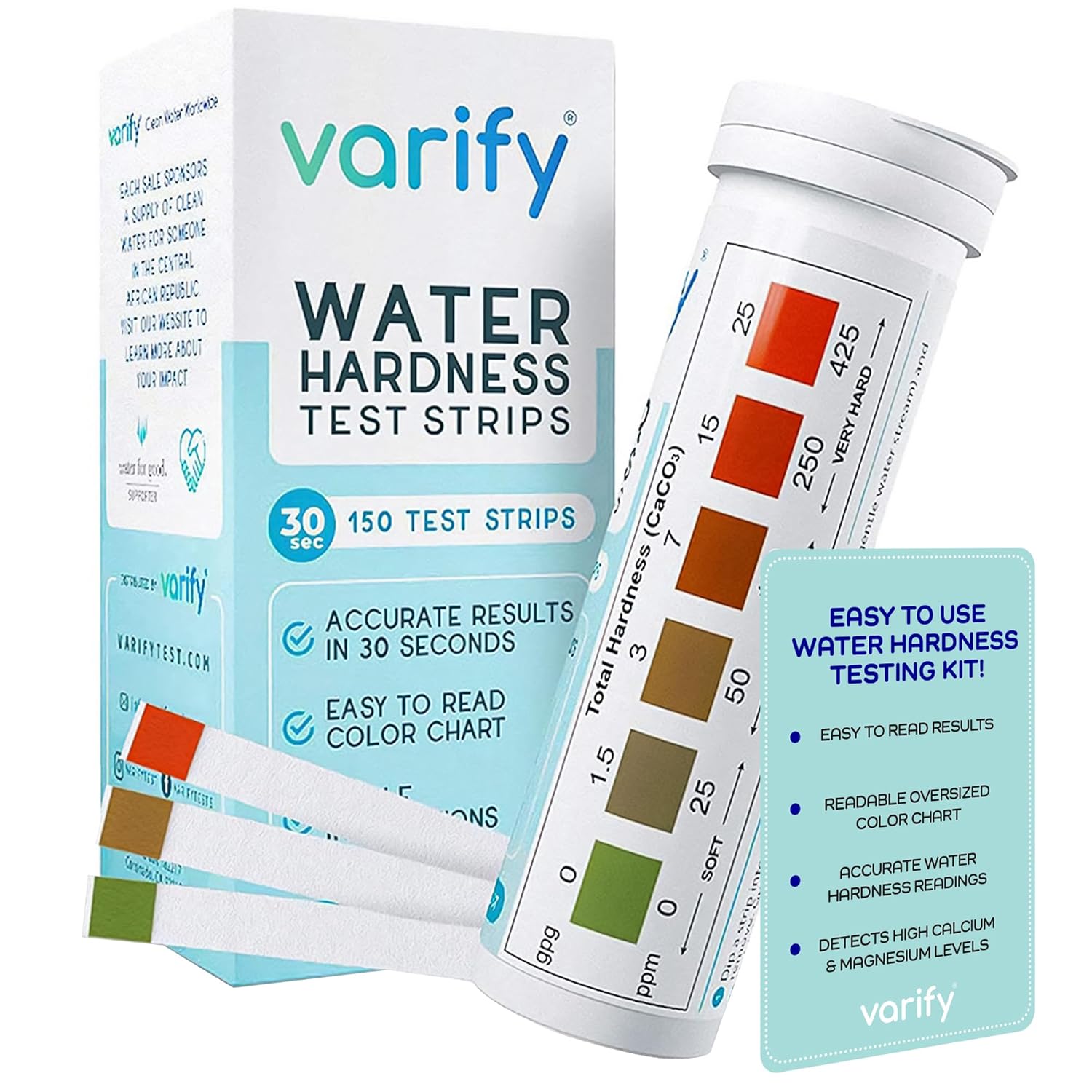Have you ever wondered whether your water is quietly costing you money or affecting your skin and hair without you noticing?
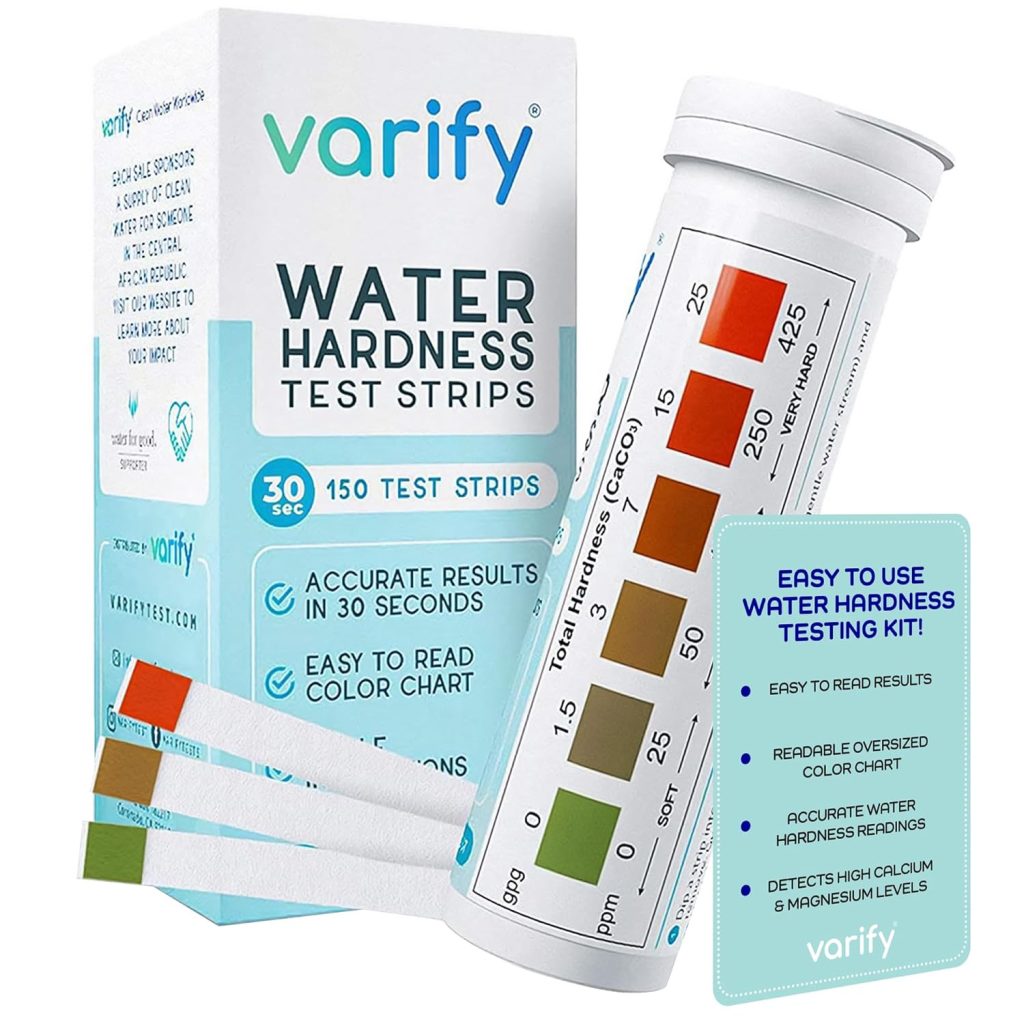
Quick Verdict
You’ll find that the Varify Water Hardness Test Kit – Water Testing Kit for Home, Drinking, Well, Spa, Swimming Pool, Softener, Dishwasher & More – Hard Water Test Strips for Calcium, Magnesium etc (0-425 pmm, 150 Strips) is a practical, no-fuss way to get immediate readings of your water hardness at home, and it gives you a lot of testing power for the price with 150 strips included. If you want fast, visual results and an easy way to monitor the impact of hard water on appliances, plumbing, and personal care, this kit will likely meet your needs without requiring specialized equipment or lab visits.
Product Overview
This kit is aimed at homeowners and anyone responsible for maintaining water appliances or managing water quality, offering a simple dip-and-read method that reports hardness in both GPG and PPM and ships with an oversized color chart to make interpretation straightforward. You’ll receive 100 strips in a ready-to-use bottle plus two sealed pouches, and the Varify FreshSeal packaging promises extended shelf life so you can test over time without worrying about expired strips.
What it Measures
The strips measure total water hardness primarily driven by calcium and magnesium concentrations, with a measurement range expressed as 0–25 GPG and 0–425 PPM which covers the spectrum from very soft to very hard water. You’ll get a direct sense of how mineral-rich your water is, which helps you decide whether you need a water softener, filter adjustment, or further testing for other contaminants.
How Many Strips and Packaging
You get 150 total strips: 100 in the bottle plus two separately sealed pouches that typically contain an additional 25 strips each, which helps maintain freshness and accuracy for later use. You’ll appreciate that the FreshSeal system reduces waste and keeps the test strips viable for months, so you can monitor seasonal variations or periodic checks without buying a new kit immediately.
Specifications Table
Below is a concise breakdown of the most relevant specs so you can scan what matters quickly and compare at a glance. The table highlights measurement range, quantity, and primary applications to simplify decision making.
| Feature | Detail | Why it matters to you |
|---|---|---|
| Product name | Varify Water Hardness Test Kit (0–425 PPM, 150 strips) | Full name clarifies intended uses and capacity. |
| Measurement range | 0–25 GPG (0–425 PPM) | Wide enough to cover most residential and commercial scenarios. |
| Number of strips | 150 total (100 in bottle + two sealed pouches) | Gives you many tests for ongoing monitoring or multiple locations. |
| Readout method | Color-matching with oversized chart | No gadgets required; you interpret colors visually. |
| Main analytes | Calcium, magnesium (total hardness) | Targets the minerals that cause scale and skin/hair issues. |
| Test type | Dip-and-read strip | Fast and easy for non-technical users. |
| Shelf-life feature | Varify FreshSeal sealed pouches | Keeps extra strips fresh for future testing. |
| Ideal for | Home, drinking water, well, spa, pool, softener, dishwasher | Versatile across common residential applications. |
| Social impact | Supports clean water initiatives in Central African Republic | Each kit contributes to a year of clean water for someone in need. |
Key Features
You’ll find several straightforward features that make everyday water testing accessible, from the visual chart to the FreshSeal packaging, and the kit is deliberately low-friction so you can use it when you need answers quickly. These features are aimed at homeowners, renters, and caretakers who want to make informed decisions about water treatment and appliance maintenance without technical training.
Fast, Dip-and-Read Results
The test strips deliver results within seconds, which means you can test multiple sources—tap, well, spa, or pool—without lengthy waits or the need to send samples out to a lab. You’ll appreciate how speed lets you troubleshoot in real time: test, compare, and act based on immediate feedback.
Easy-to-Read Color Chart
Varify supplies an oversized color chart that ranges from red to green to make it as intuitive as possible to identify where your water falls on the hardness scale, and the chart is printed clearly so you can match colors even under normal household lighting. You’ll find that color matching is the simplest approach when you want to make quick decisions about softeners, filters, or when to descale appliances.
Varify FreshSeal and Shelf Life
The FreshSeal packaging includes two additional sealed pouches beyond the bottle of strips so you can maintain freshness and accuracy for later tests, which is especially useful if you only test occasionally. You’ll save money because your extra strips remain viable, reducing the need to buy replacement kits each season.
Wide Measurement Range (0–425 PPM)
The range covers very soft to very hard water standards, so you won’t be left guessing whether you’re dealing with mildly mineralized water or severe hardness that could cause scale or appliance damage. You’ll be able to interpret results against typical benchmarks and make a reasonable decision about installing a softener or adopting other water treatment strategies.
Versatile Applications
Whether you’re checking drinking water, monitoring a spa or pool, verifying a softener’s performance, or testing a well, the kit’s broad use cases mean you can rely on one kit for multiple points around your home or facility. You’ll find the flexibility especially convenient if you manage several water sources or move between properties.

Using the Kit: Step-by-Step
You’ll find the process is intentionally simple: collect a sample, dip a strip, compare to the color chart, and record the reading if you need to track changes over time. Keeping a log of tests can help you spot trends or the effect of treatments like water softeners or new filtration systems.
Preparing to Test
Before testing, you should run cold water for a minute to clear stagnant water and then collect a sample in a clean container so the strip only measures the current source water and not residue from pipes. You’ll get more reliable readings if you avoid testing right after boiling or after cleaning that could temporarily change mineral concentrations or coloration.
Performing the Test
Dip the strip into the water sample according to directions—usually for a second or two—then remove and wait for the color to develop for the recommended time before comparing. You’ll want to hold the strip next to the oversized chart in good light and match the developed color carefully to get the closest reading.
Reading and Interpreting Results
Match the strip color to the chart to obtain a PPM and GPG reading, and then compare that number to recommended ranges for drinking water or manufacturer guidance for appliances and softeners. You’ll be able to decide if you have “soft,” “moderately hard,” or “very hard” water, and then take steps such as softener installation or professional consultation if numbers are high.
Storing Your Strips
After opening the bottle, store it upright in a cool, dry place and make use of the sealed pouches for longer-term storage so remaining strips don’t get exposed to humidity or contaminants. You’ll extend strip life substantially if you don’t leave the bottle uncapped or keep it in a damp bathroom environment.
Accuracy and Reliability
For what it is—an inexpensive, disposable strip test—the kit gives consistently reasonable and repeatable results for total hardness, making it excellent for routine screening and ongoing monitoring. You’ll want to remember that strip tests are qualitative-to-semi-quantitative and are best used for checking trends or confirming whether hardness falls within a general band rather than obtaining lab-grade precision.
Precision and Limitations
Strips measure total hardness well enough to inform everyday decisions, but if you need exact concentrations for regulatory compliance or scientific analysis you should follow up with a certified lab or a digital meter for higher precision. You’ll find that strips can sometimes be less accurate when water has high turbidity, unusual chemistry, or when used incorrectly, so they’re best as a first step in assessment.
Tips to Improve Accuracy
To get the most accurate result, use fresh strips kept in sealed packaging, avoid contaminating samples, perform tests at room temperature, and compare colors under consistent lighting conditions. You’ll cut down on variability by testing multiple times or testing two different samples from the same source to confirm readings.
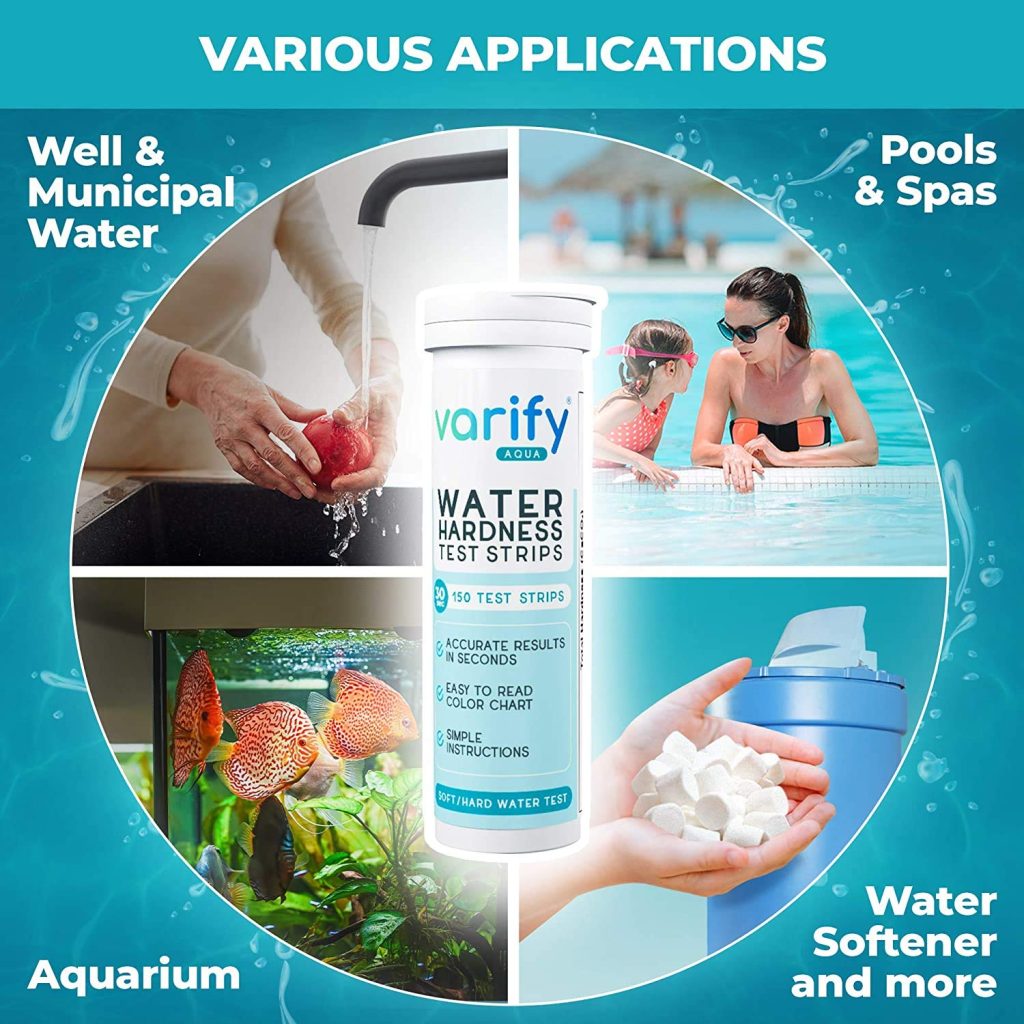
Design, Packaging, and Shelf Life
The kit’s packaging is practical: a bottle with a cap for immediate use plus two individually sealed pouches for long-term freshness, and the oversized color chart is printed for easy reading and reference. You’ll appreciate that packaging doesn’t try to be fancy—it’s designed to keep strips stable and to make storage and transport simple.
Environmental and Social Impact
Varify has positioned its kit with a social mission, contributing to clean water initiatives that fund a year of clean water for someone in the Central African Republic with each kit, which means your purchase has a charitable dimension. You’ll feel good knowing a practical household purchase contributes to global water access, and the strip format minimizes waste compared with single-use plastic-heavy alternatives.
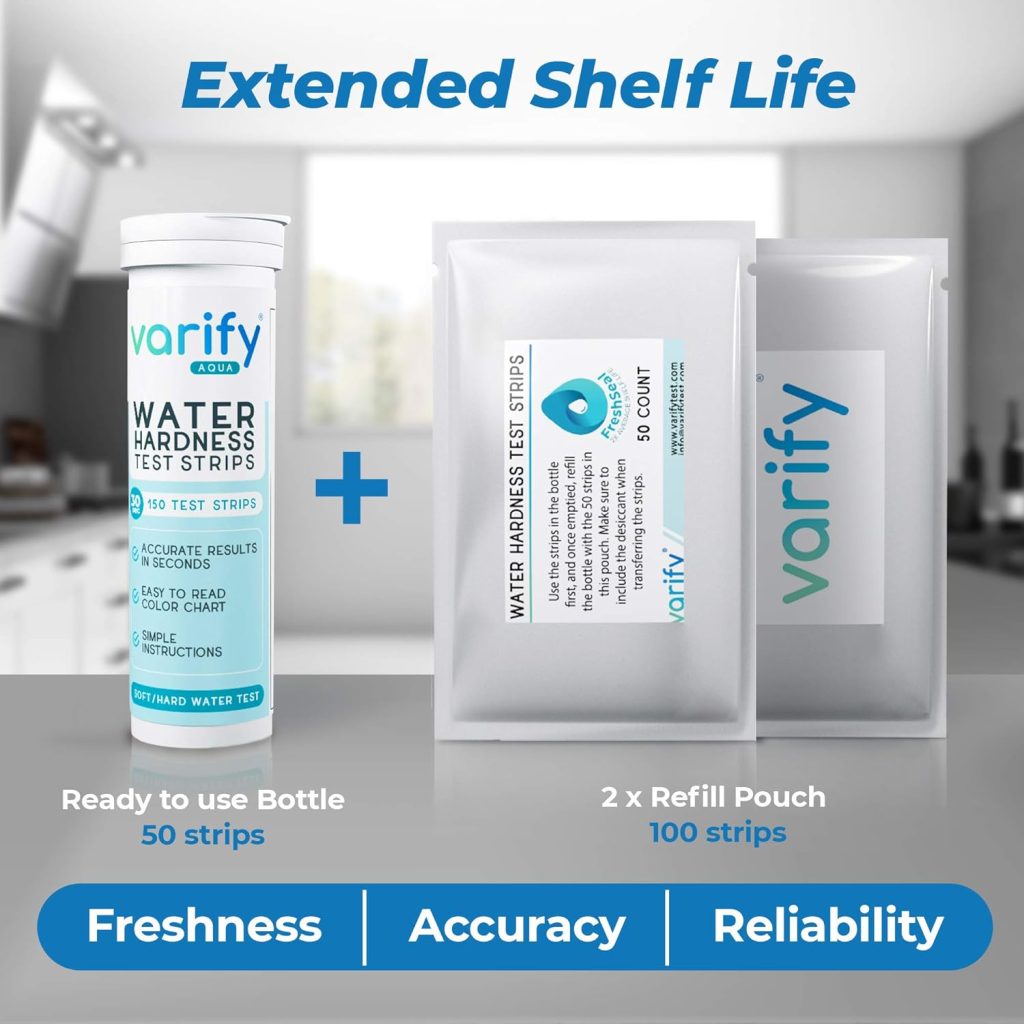
Comparison with Other Test Kits
Compared with multi-parameter kits or digital testers that measure additional chemical parameters or provide numerical readouts, this kit’s focus on hardness and simplicity makes it less complex but much more affordable and user-friendly for routine checks. You’ll likely choose this kit if you want a quick yes/no or coarse numeric indicator of hardness, while professionals or lab-bound users might prefer instruments with finer resolution.
Strip Kits vs. Digital Meters
Strip kits are low-cost, portable, and simple, whereas digital meters give higher precision and can log data more reliably but come at higher cost and require calibration and battery maintenance. You’ll opt for strips if you need accessibility and quantity of tests, and for meters if you demand exact values and frequent, long-term data collection.
Why Choose Varify
You’ll pick Varify if you want a substantial number of tests (150 strips), a clear visual chart, and the FreshSeal sealed pouches that extend shelf life and reduce the need for frequent repurchasing. The charitable angle also adds value if you prefer to support a brand with social impact when you make household purchases.
Pros and Cons
You’ll find the main advantages are price, convenience, and quantity—150 strips is a strong value for household monitoring—while limitations include the inherent imprecision of colorimetric strips and their sensitivity to user technique. If you want an accessible, fast method for routine checks and aren’t reliant on lab-grade measurements, the kit checks many practical boxes.
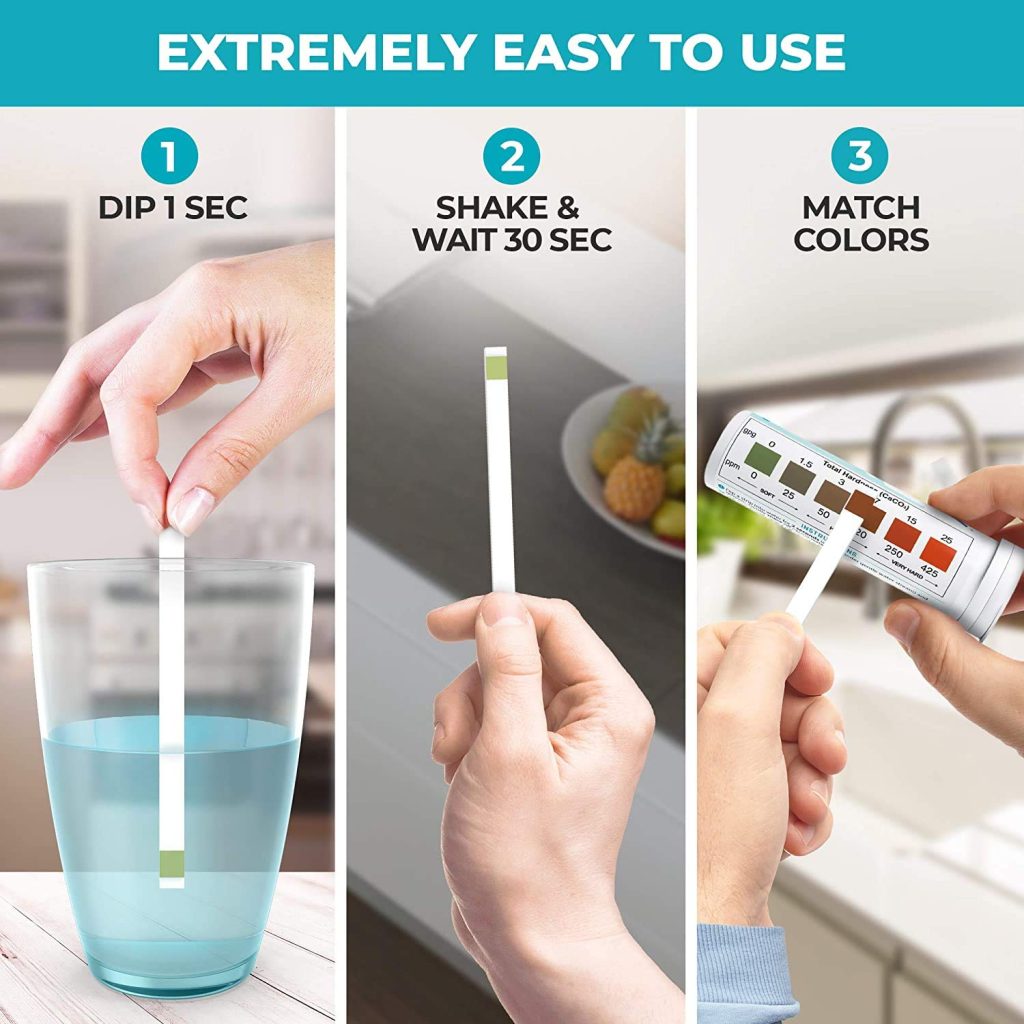
Who Should Buy This
This kit is ideal for homeowners, renters, pool and spa owners, people with well water, and anyone considering a water softener who wants to verify hardness before investing in equipment. You’ll also find it helpful as a maintenance tool to test appliances periodically and confirm your softener or filter is functioning as expected.
Frequently Asked Questions
Below are common questions you might have when deciding whether this kit suits your needs, answered concisely so you can make quick decisions without reading dense technical manuals. Each FAQ is geared to help you use the kit effectively and interpret typical results.
How long do the strips last once opened?
Once opened, strips will last longer if you reseal the bottle tightly and keep unused strips in the sealed pouches, and you should follow any expiration guidelines on the packaging; stored properly, many strips remain usable for months. You’ll want to avoid moist or warm storage conditions, which are the main factors that degrade strip performance.
Can the strips detect other contaminants besides calcium and magnesium?
These strips are designed to measure total hardness primarily caused by calcium and magnesium and are not intended to detect heavy metals, bacteria, or organic contaminants. You’ll need specialized tests or lab analysis if you’re worried about lead, pesticides, microbial contamination, or other specific pollutants.
Are readings affected by water temperature or cloudiness?
Extreme temperatures and heavy turbidity can affect strip performance or color development, so you should test at roughly room temperature and on reasonably clear samples for best accuracy. You’ll get more consistent results if you allow very cold or very hot water to adjust to ambient temperature before testing and avoid testing visibly dirty or sediment-laden samples.
How do I interpret results for appliance care?
General guidelines suggest water above 7–10 GPG (about 120–170 PPM) can lead to noticeable scale and appliance inefficiency, and higher levels may justify a water softener or targeted treatment. You’ll use the PPM/GPG reading to compare against manufacturer guidance for appliances—many will state safe maximums or recommended treatments based on hardness.
Can I test multiple sources with the same kit?
Yes, the kit includes enough strips to check multiple taps, wells, pools, and appliances, and you should label or log each reading to track differences and changes over time. You’ll find testing across locations helpful to determine whether hardness issues are isolated or system-wide.
What should I do if my water tests very hard?
If the strips indicate very hard water, consider consulting a water treatment professional to discuss softener options, or perform follow-up testing with a more precise device or lab if you need exact quantification. You’ll also want to monitor appliances and apply descaling measures as needed to prevent damage while you explore long-term solutions.
Care and Maintenance Tips
To keep your kit working well, avoid exposing strips to moisture, store them in a stable, cool location, and use the sealed pouches for spare strips to maintain their accuracy over time. You’ll extend the effective life of the kit by labeling opened bottles with the date and rotating through sealed pouches in order to ensure you don’t use old strips past their effective life.
Final Thoughts
If you’re looking for a friendly, economical, and practical way to gauge water hardness quickly and frequently, the Varify Water Hardness Test Kit delivers actionable results without fuss, and its large supply of strips plus FreshSeal packaging make it a sensible long-term option. You’ll get immediate feedback you can act on, whether that means adjusting a softener, installing protective devices on appliances, or simply being more informed about how your water affects daily life.
Disclosure: As an Amazon Associate, I earn from qualifying purchases.


